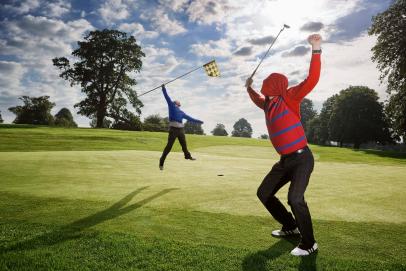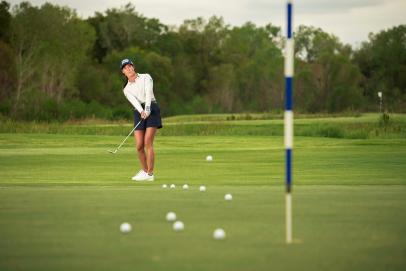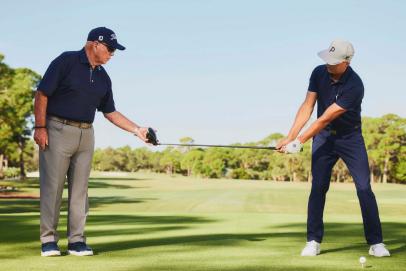Journeys
How PGA Tour rookie of the year nominee Eric Cole overcame disease, a broken back and 13 years of playing mini-tours for peanuts
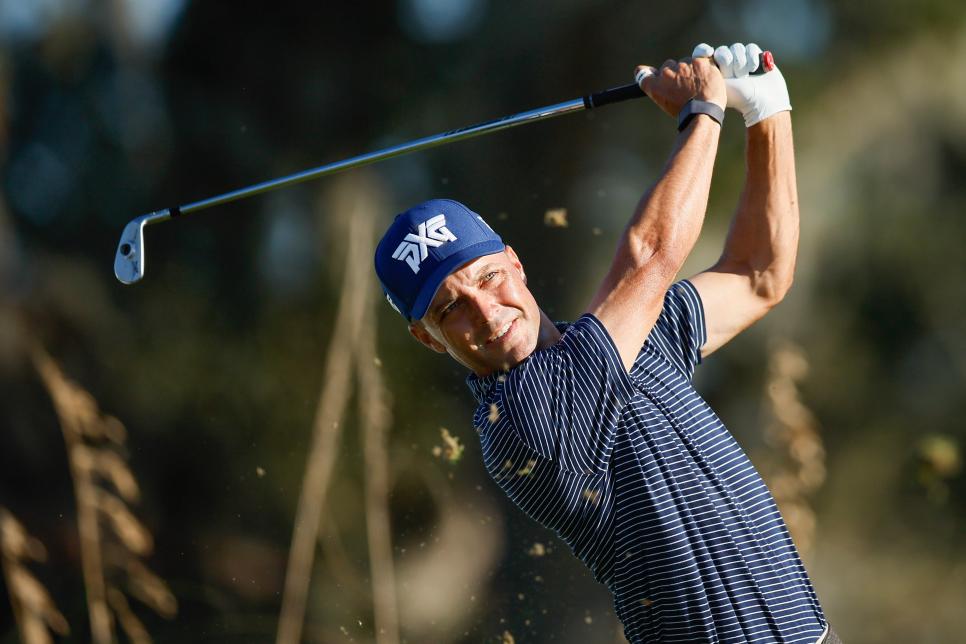
Alex Slitz
Editor’s Note—Eric Cole, 35, just finished playing his rookie season on the PGA Tour. During the 2022-23 campaign, Cole played 37 PGA Tour events and a tour-leading 126 rounds, posting seven top-10s and earning $5.4 million. He is among five players nominated for the Arnold Palmer Award, given to the top rookie on tour as voted by tour players. In addition to his PGA Tour starts, Cole frequently played in events on the Minor League Golf Tour, including winning its Tour Championship last week.
● ● ●
My six siblings and I took up most of the LPGA Tour’s daycare room in the 1990s. My mom, Laura Baugh, would pile my siblings and me into a van, and we’d go from LPGA tournament to LPGA tournament all summer. My dad, Bobby Cole, was a pro golfer, too.
● ● ●
All of us kids learned to play golf, but I had the most passion for it. I played a lot of golf with my mom as a kid because we hit it about the same distance. Mom was the LPGA Rookie of the Year in 1973 and played the tour for 25 years. The best thing she taught me was to work hard when you’re at the course and leave it there. If you only think about golf, you’ll get fatigued. My dad, a PGA Tour winner, worked with me on my swing. He taught me to own my swing and be aware if it changes.
● ● ●
I spent junior golf learning about the game instead of playing a ton of tournaments. My mom remarried when I was a teenager, and we had a membership at Bay Hill. One of my best friends is Sam Saunders, Arnold Palmer’s grandson. We played with a bunch of pros: Lee Janzen, Robert Damron and Dicky Pride. They helped our games develop faster than other juniors. We went to the range with a plan, practiced wedges more than other juniors and had pre-shot routines before other kids did.
● ● ●
When it came time for college, I wasn’t focused on school. I wanted to be a professional golfer. Neither of my parents went to college, but they told me to try it. Nova Southeastern University was the first school to send me a letter of intent. It’s a Division II program in Fort Lauderdale. I wanted to stay in Florida; I signed it.
● ● ●
I played well as a freshman, but during my second year, I felt incredibly lethargic. My body ached, and I lost a bunch of weight. I went home, thinking rest would fix me, but I got worse. I weighed 117 pounds when my mom took me to the ER. I was diagnosed with two autoimmune diseases: type 1 diabetes and Addison’s disease.
● ● ●
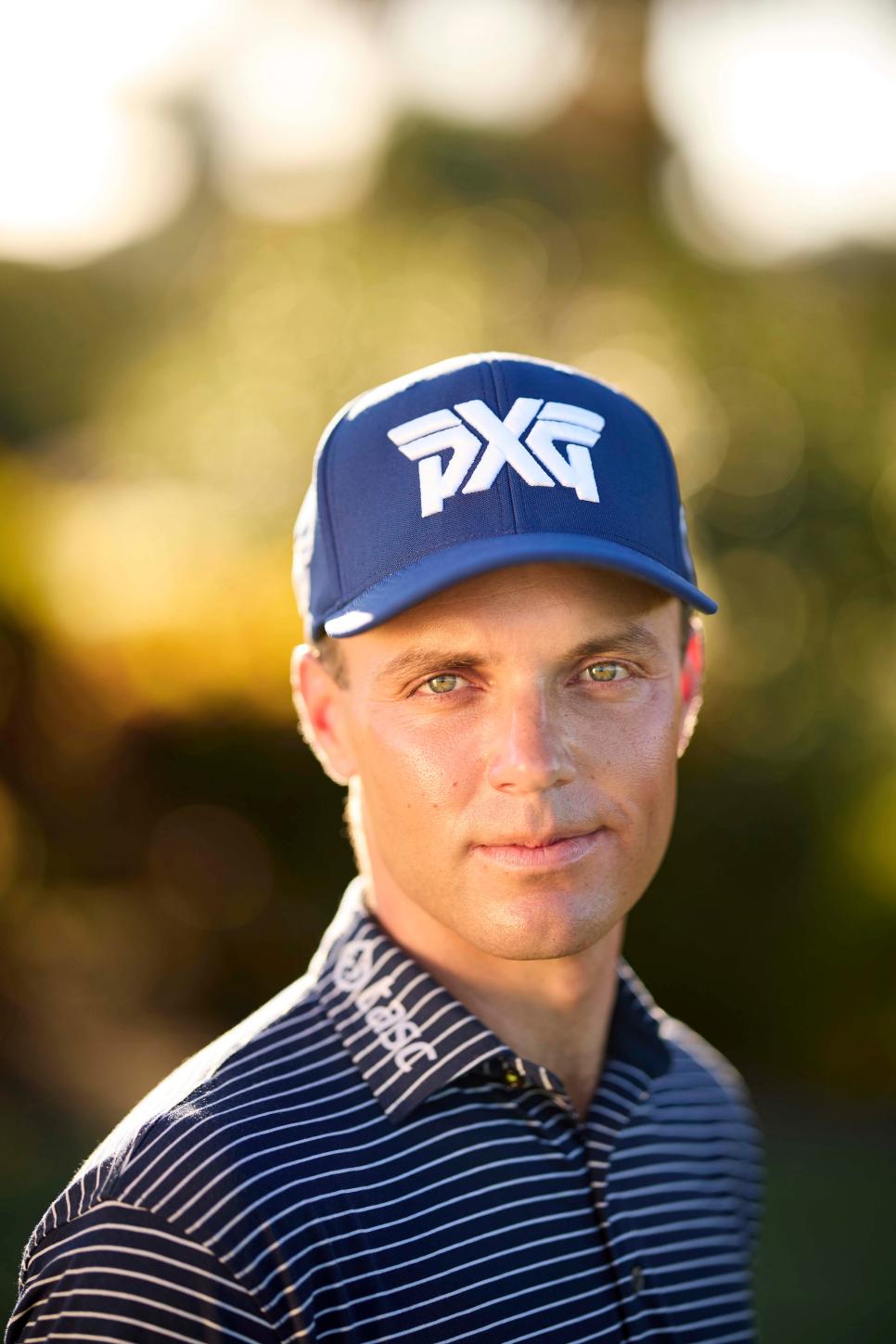
I wear an insulin pump and blood glucose monitor. In my golf bag, I carry sugar-free protein bars for when my blood sugar is stable, and I have Sour Patch Kids and Starbursts for when it dips. To treat Addison’s, I take a few pills in the morning to replace the hormones my body doesn’t create, and I don’t have symptoms. As long as I have my medication, gear and supplies, I feel good.
● ● ●
After a couple of months, I got healthy. I didn’t return to school and turned pro instead. Why prolong the inevitable? I didn’t have any sponsors. My mom paid for Q school that first year; I didn’t get through. I played mini-tours in Florida, figuring I’d save on travel costs by playing events I could drive to. I played the Moonlight Golf Tour, where I would pay a $90 entry fee and the winner got $300. The one-day events on the Minor League Golf Tour were $150 to $200 to get in, and the winner got just under $1,000. Over the years, I won 56 times on the Minor League Golf Tour.
● ● ●
I was able to pay my bills and go to Q school every year, but I wasn’t getting through. I was frustrated, but my parents reassured me: If you’re good enough, it can start to happen quickly. I believed in myself, so I kept going. In 2015, a group of guys at my club, Tequesta Country Club, raised some money so I could travel to play in tournaments outside of Florida. It was hard for me to take the money, but I realized it’s OK to accept help. Getting out of Florida and playing new courses helped my game. After going to Q school six times, I finally got through in 2016 and earned status on the Korn Ferry Tour. The dream of reaching the PGA Tour felt new again.
● ● ●
Just when I was closer to the tour than ever, I was diagnosed with a stress fracture in my back. I don’t know what caused it, but I had to stop playing. I spent 2018 teaching golf at Abacoa, a course in Jupiter. The juniors I taught were so excited about the game, and I could help them like the pros helped me when I was young. I wasn’t pursuing my dream, but I was still happy. I realized that if I never make it to the tour, I’ll be OK. When I started competing again, I felt less pressure.
● ● ●
I came back to the Korn Ferry Tour in 2020. I made about half the cuts that season. In 2022, I settled in. I had five top-10s and finished inside the top 25 to get my PGA Tour card. It felt like a reward for all the hard work and validation for everyone who had helped me.
● ● ●
I got off to a rough start during my rookie season: I had COVID-19 at the Fortinet, my clubs were stolen at the Shriners, and I missed several cuts in a row, but I trusted my game. I saw enough guys get to the tour, change their games and struggle even more. After 13 years of mini-tours, I have a lot of patience. In February 2023, I almost won the Honda Classic. My dad won on the PGA Tour. It would be cool to share that with him.
Hope you enjoyed this story! If you have someone who loves golf in your life, there's no better gift this holiday season than Golf Digest+, the ultimate experience on how to play, what to play and where to play your best golf.


